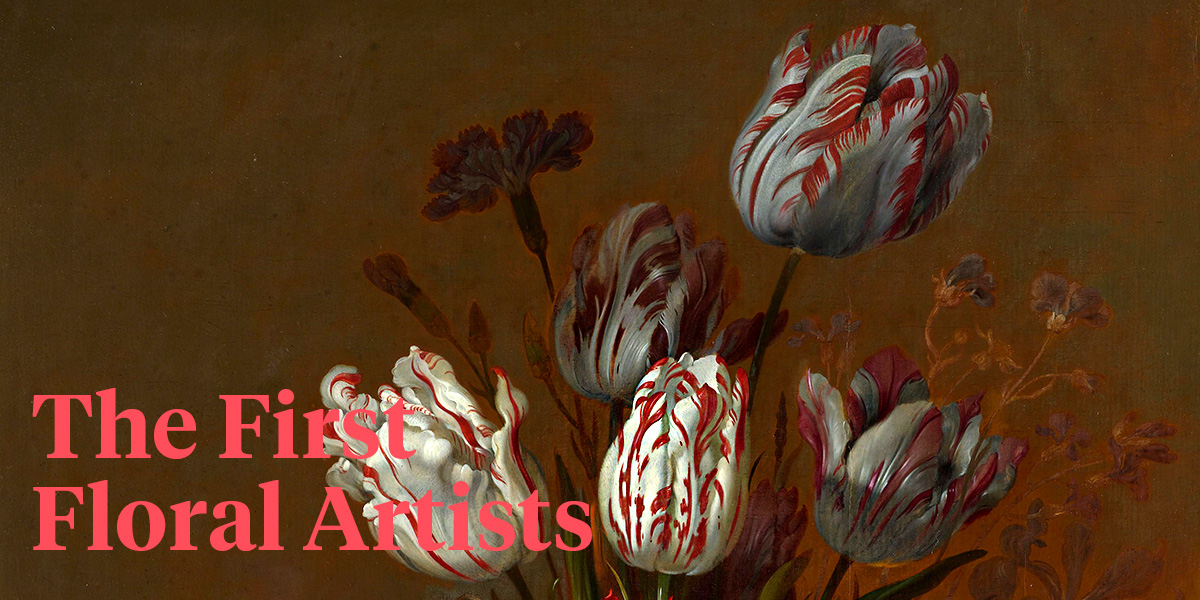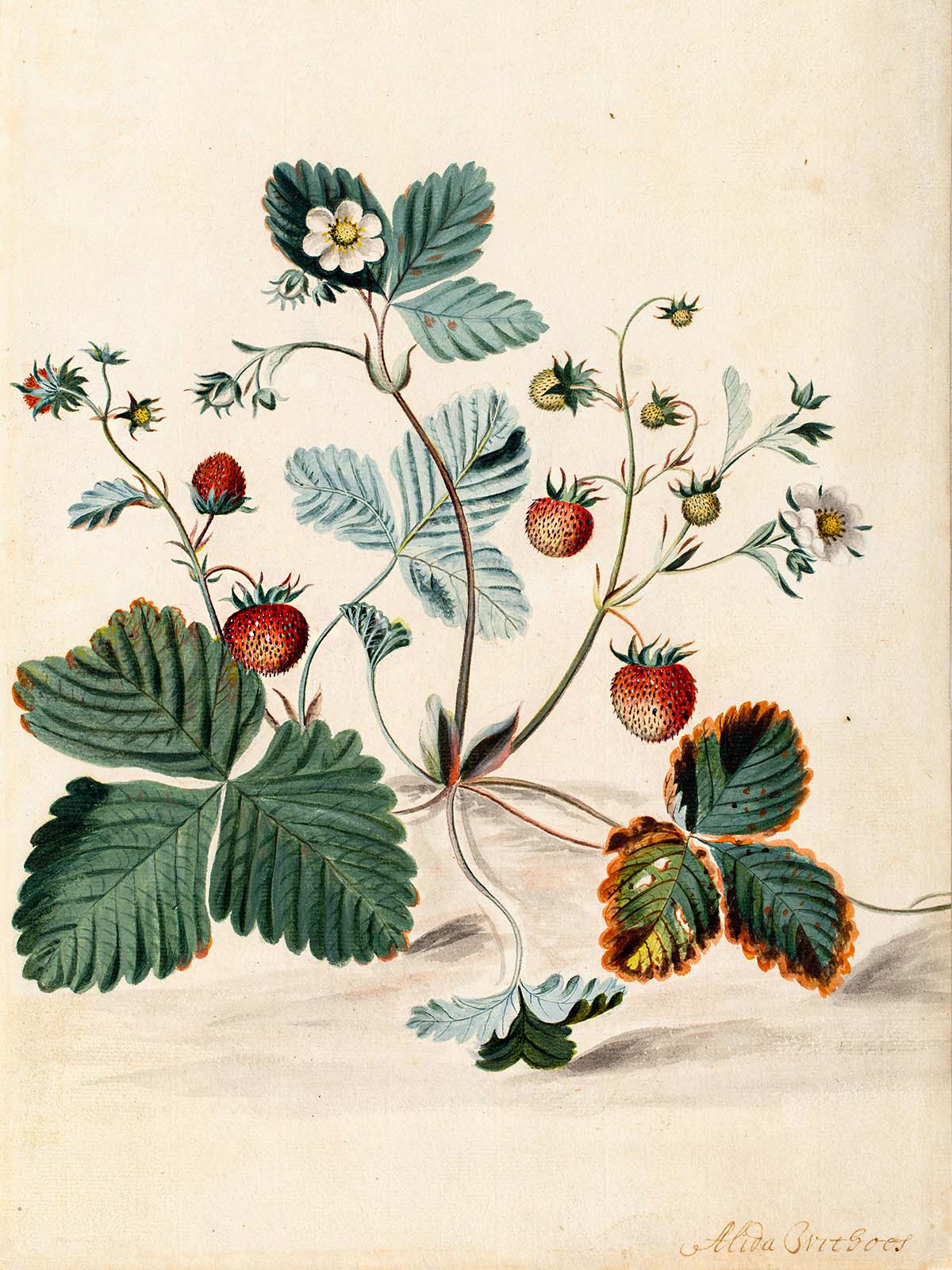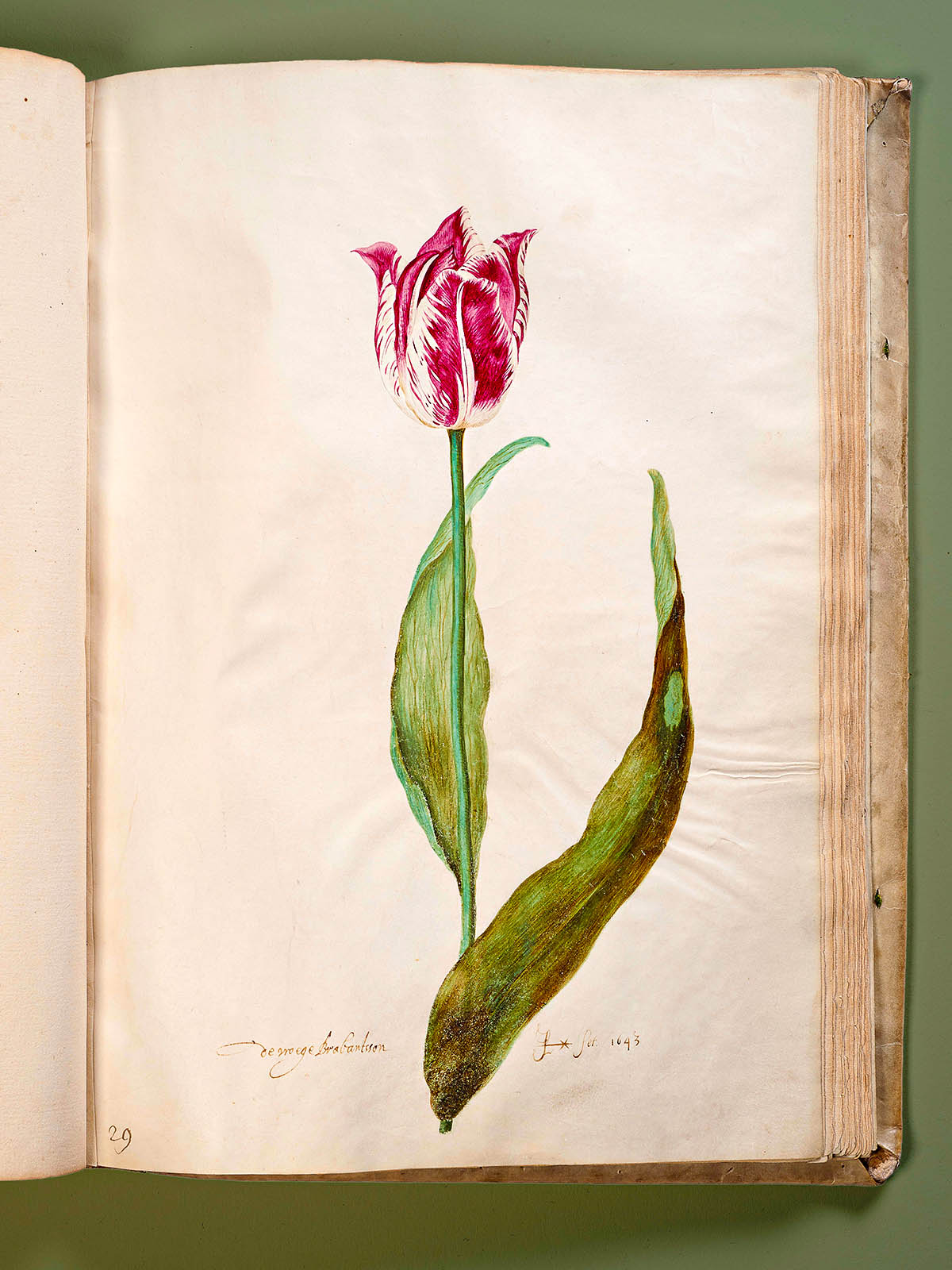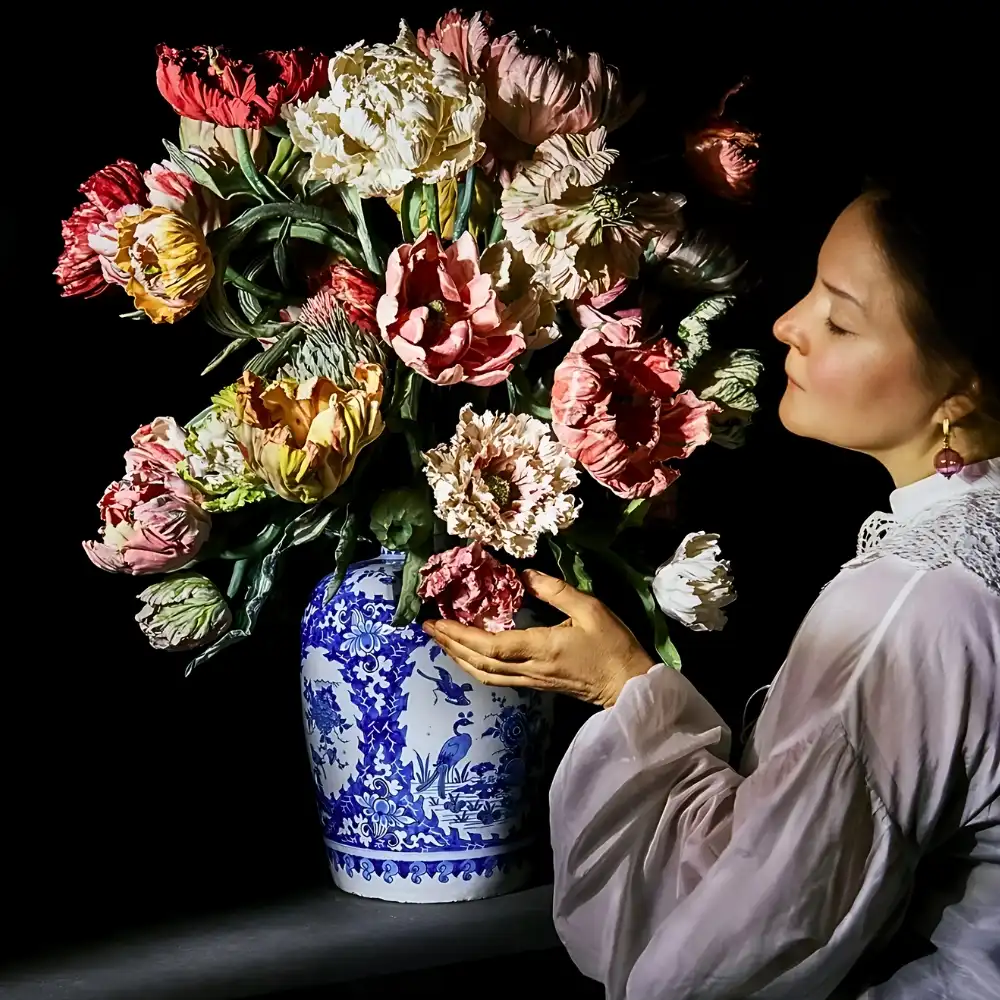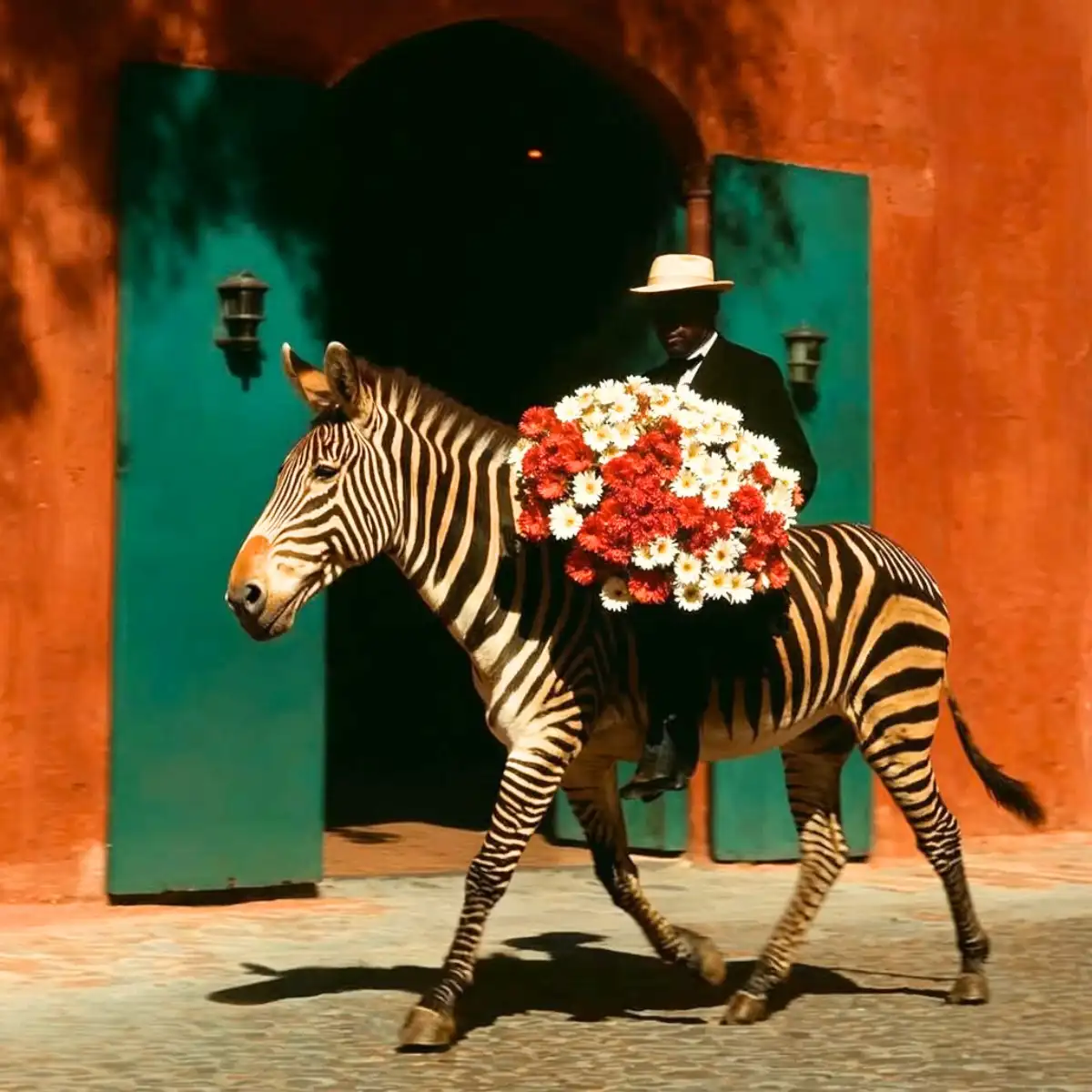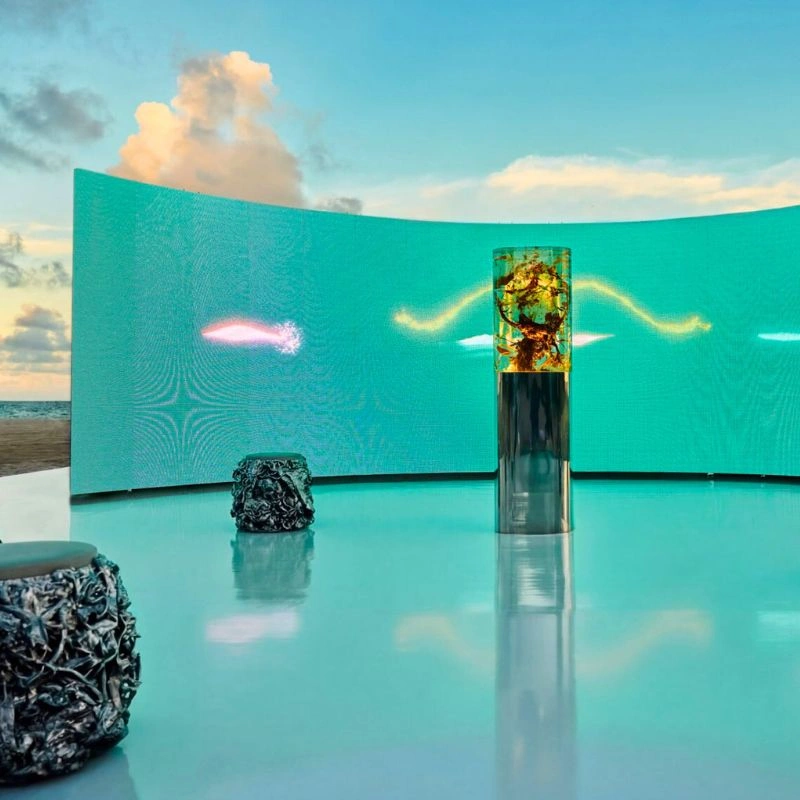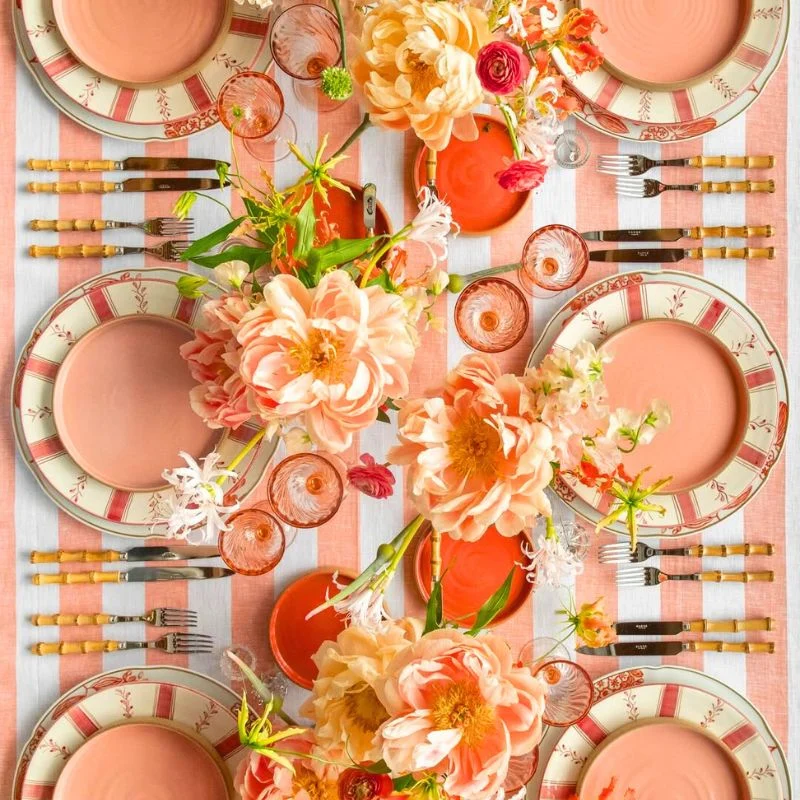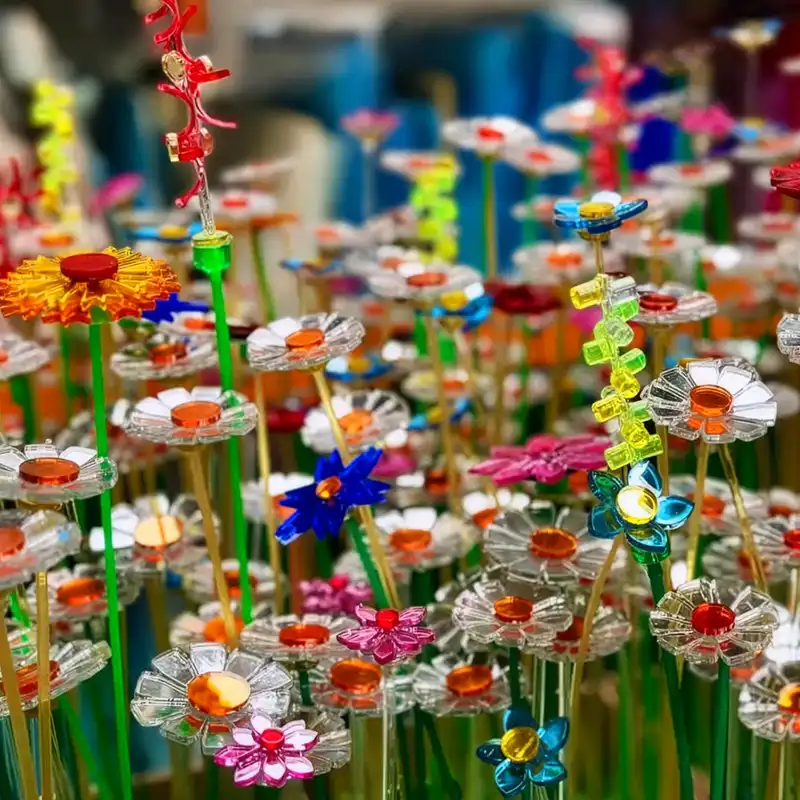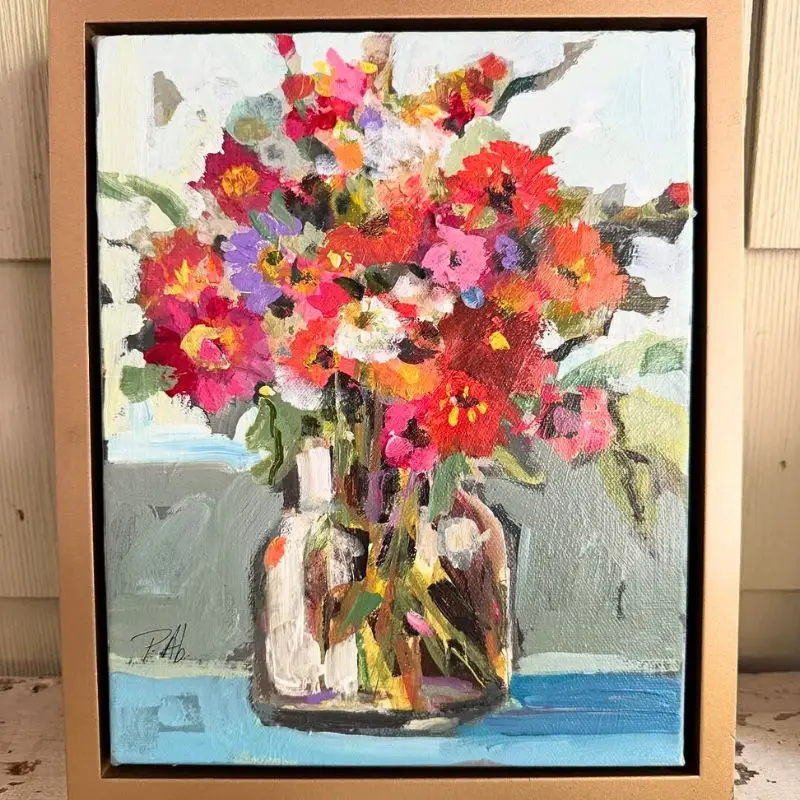The world's first florists were painters. That's a striking remark that can be concluded from an exclusive interview with Ariane van Suchtelen, curator of the Mauritshuis, about 'In Full Bloom' the exhibition on floral art in the 17th century.
Anniversary Year
The Mauritshuis is a small world-class museum with a formidable collection of Dutch and Flemish paintings from the 17th century; the Golden Age of Art. Here you will find works from some of the biggest Dutch painters, like Rembrandt, Rubens, and Vermeer (does 'Girl With a Pearl Earring' ring a bell?). In 2022, it has been 200 years since the Mauritshuis became a museum. That calls for a celebration! With spectacular exhibitions. And what's a celebration without flowers? Exactly that thought came up with the staff of the Mauritshuis. The result is an abundant exhibition of flower art, 17th-century style. From 10 February until 6 June 2022 flowers are in the spotlight in the special exhibition In Full Bloom.
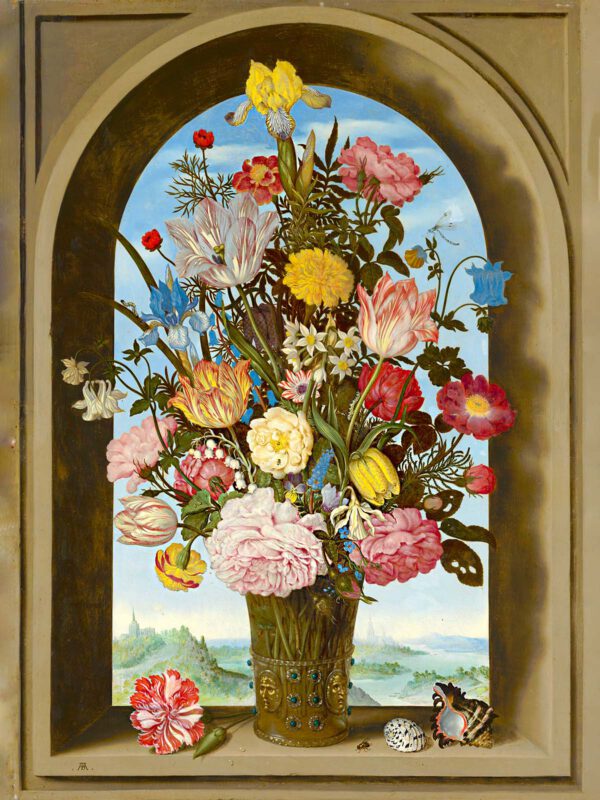
The Exhibition 'In Full Bloom'
In the anniversary year, the Mauritshuis will treat its visitors to a colorful bouquet, consisting of the best flower still lifes from the 17th century, a period known as the Golden Age of Art. The museum itself has a very rich collection of flower paintings, masterpieces by Ambrosius Bosschaert, Roelant Savery, Jan Davidsz de Heem, and Rachel Ruysch. It is not without reason that these painted bouquets are among the most popular works in the collection. Supplemented with loans from all over the world, the Mauritshuis will tell the fascinating story of this genre in the exhibition 'In Full Bloom'. For more than a century, from roughly 1600 to 1730, the flower still life made a special development; from 'impossible' fantasy bouquets and daring constructions to sumptuous spectacles. But always very decorative, breathtakingly detailed, and a feast of color... with lots of little creepy crawlies.
The Curator
Ariane van Suchtelen studied art history at the University of Groningen before becoming a museum curator at the Mauritshuis in The Hague. She is specialized in Dutch painters from the 17th century, named the Golden Age of Art. She has published many articles and books on Dutch art from this period and she has a profound interest in flowers in paintings, as you will learn in this interview with her about 'In Full Bloom'.
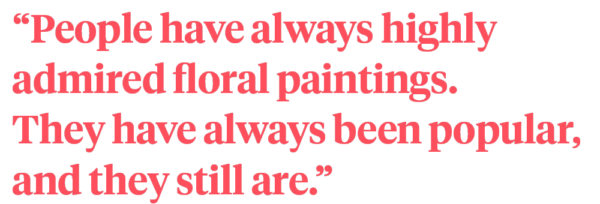
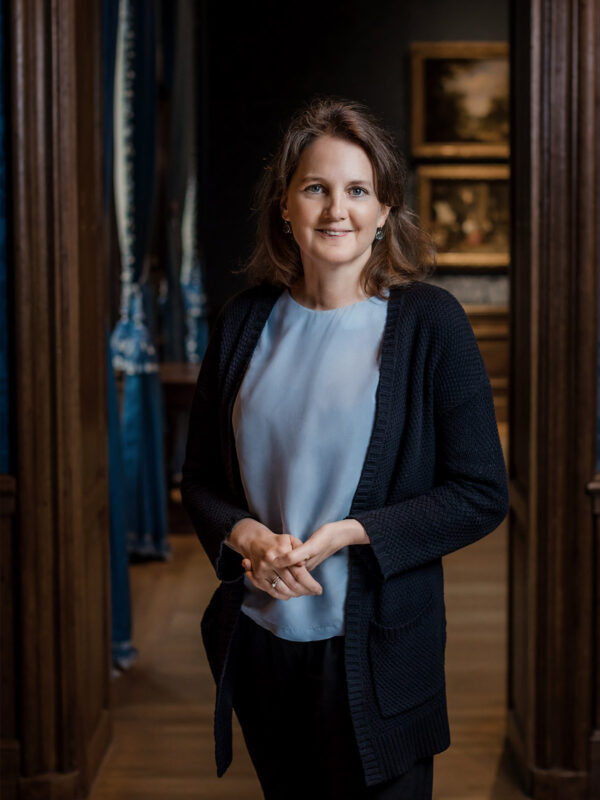
What can the visitor of 'In Full Bloom' expect?
Ariane: "The visitor will be presented sixty artworks from the 17th century from some of the best Dutch and Flemish painters and illustrators. The Mauritshuis has a beautiful collection of flower still lifes. Along with the artworks we tell about the origin and in large steps the development of the genre. We show a collection of paintings, printsand drawings, albums, books, and illustrations by many people; both men and women. Those women are particularly important to mention. The burdens for a woman to work professionally were gigantic back then, which is hard to imagine for us today. However, although it was still extremely rare at that time, there was a relatively large number of female painters and illustrators in this genre, like Alida Withoos, Judith Leyster, and Maria Moninckx. I have tried to collect these works as much as possible in this exhibition to tell their stories as well."
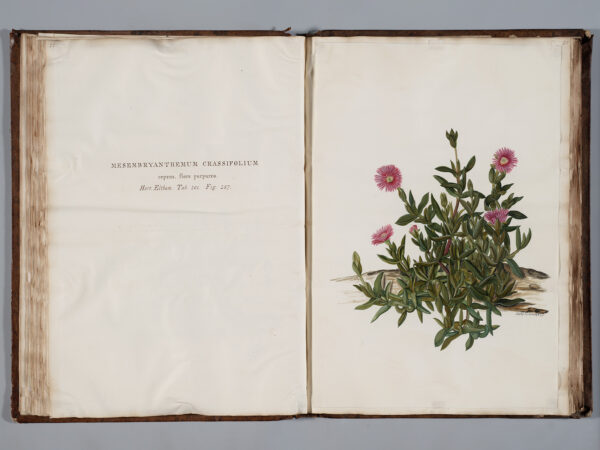
"Next to the indoor exposition, the Mauritshuis will be decorated outdoors with flowers. The forecourt and facade will be decorated throughout this year by Tom Postma Design with different types of seasonal flowers. This will make the whole Mauritshuis bloom."
Did and do people like floral paintings?
"People have always highly admired flower still lifes. They have always been popular, and they still are. If we post on our socials a picture of a floral still life we are sure to get many likes."
Was there such a thing as a 'florist' in the 17th century?
"There were traders in bulbs in that period. During 'Tulip Mania' (1634-1637) tulip bulbs were worth a fortune. But there was no floristry and there were no florists. The painters and illustrators made the compositions themselves. Can you imagine that these were really the first people who realized that flowers were art? That made them — in a way — the first florists ever."
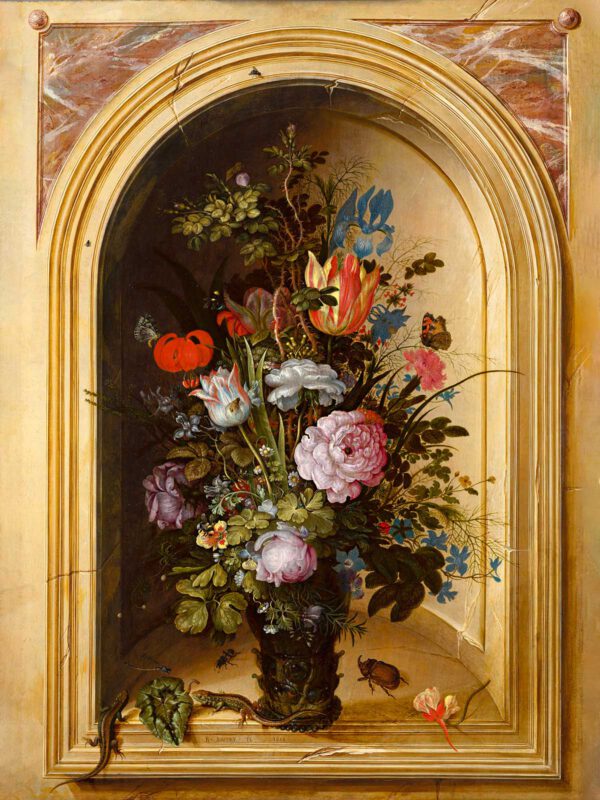
"Around the year 1600 the genre 'Still Lifes' in general and 'Flower Still Lifes' in particular emerged in the Netherlands. A large part of this country was at war with Spain from 1568 to 1648, but the northern provinces, in particular Holland and Zeeland, were free and thriving economically. This opened up possibilities for the development in two fields that went hand in hand: science and arts. The world was discovered more and more, nature was explored, botany — plant science — rooted. In those years gardens were not anymore merely used to grow vegetables and herbs, but also plants and flowers for decoration. Although the British are thought of as inventors of the gardens, it was the Dutch. Founded in 1594, Hortus Botanicus in Leiden is one of the world's oldest botanic gardens in the world. Artists went to the botanic garden to draw the flowers when they bloomed — then they would use those drawings to create their paintings in the studio. Such drawings were also meant for illustrations in taxonomy — scientific categorization or classification. Before that people knew so little about nature, so someone had to depict the beauty and particularities of all those plants."
Were floral still lifes typically Dutch?
"Floral still lifes in the 1700s were only made in the Netherlands — which included large parts of today's Belgium as well back then. You would see an occasional painting from Italy or France, but that was always inspired by Dutch example. You must imagine that this genre was completely new; before 1600, paintings mainly depicted religious scenes and portraits. Dutch artists started painting still lifes with flowers, but also Dutch landscapes and scenes inspired by daily life. There was a growing interest in people's ordinary lives. That is still so special about this period; even today we recognize these scenes from everyday life, so this keeps on appealing us. This is also the case with the flower still lifes. Flowers have always appealed to us."
Which flowers were most popular in the 17th century?
"Flowers from all over the world became more and more available in the Netherlands in the course of the 17th century. New exotic flowers were discovered and imported. Tulips came to Holland from Asia through Turkey at the end of the 16th century. So you see tulips appear often in those painted bouquets. Naturally, because this was the most expensive and luxurious flower at that time. Tulip bulbs were worth a fortune."
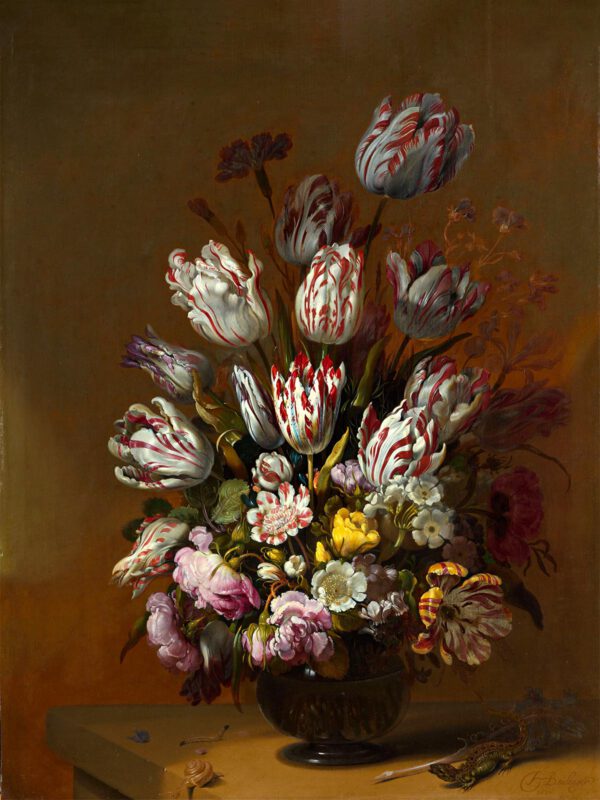
Furthermore, you'll see peonies quite often, lilies, iris, and roses. And there are flowers in the paintings that do not exist anymore. Roses — the most popular flower of today — did not look like the standard rose we know, but more like the scented garden roses that are becoming increasingly popular again recently. Around 1650 we see more and more flowers from South Africa appear in the artworks, probably because then the Dutch had founded a trading post in the Cape of Good Hope and brought South African products to Holland. One of the most popular flowers of today, chrysanthemums, do not appear in floral still lifes from the 17th century. Simply because they had not been introduced in Europe until the 19th century. I once did research with Carla Teune, a horticulturist from the Botanical Garden of Leiden. We examined a floral still life and made a list of all 30 species in that painting. It appeared that many of those flowers are extinct."
What was the floral design style of those days?
"The style was lavish. There is a big diversity of flowers that are grown throughout the year. Nowadays you can get most flowers year-round, but 300 years ago, this was impossible. It was difficult to put these all in a vase and paint them. If you look at the still lifes, you see that some of the stems are way too long just so they could appear somewhere in the bouquet. Truth is, the painters did not paint the exact vase that you see. They added every single flower in its most scientifically natural position and color. Ambrosius Bosschaert the Elder was the first painter to focus exclusively on flower still life. Around 1618 he painted a huge bouquet that stands in a niche. Each flower is reproduced exactly from life, but the 30 different flowers have never all bloomed at the same time. The bouquet itself is also fantasized: all the flowers are at the front so that in reality it would immediately fall over. In addition, the top flower would had to have an impossibly long stem to stand out from the rest."
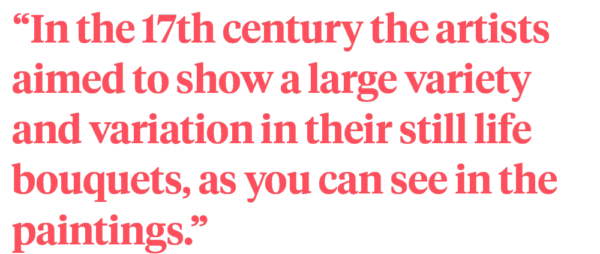
How do these painted bouquets relate to today's floral bouquets?
"In the 17th century, the artists aimed to show a large variety and variation in their still life bouquets, as you can see in the paintings. They had a brilliant eye for detail, not only painting the flowers; just look around the bouquets and discover that the paintings are populated with insects, butterflies, caterpillars, and critters. They were discovering the world simultaneously, like scientists. In general red, white, and pink were dominant colors. Yet the painters mixed all kinds of colors, also using bi-colored flowers. You could say that the designs were very colorful indeed. At the beginning of the 17th century, there was the main focus on the rarity and preciousness of the flowers. Over the course of this century, the type of flowers becomes lusher and larger in shape. In 1639 Hans Bollongier painted a somewhat 'messier' bouquet than his predecessors; less frontal, less symmetry. The flowers at the back are less exposed to light, which gives the work more depth. In the second half of the 17th century the flower still life was upgraded, resulting in 'exploding' bouquets. The tulip, columbine (aquilegia), and lapwing flower (fritillaria) were joined by special varieties such as Provence garden rose, snowball (viburnum), and poppy (papaver). Willem van Aelst and Jan Davidsz. de Heem turned their flower still lifes into true spectacles. Everything had to visually seduce: hidden flowers, little creepers everywhere, beautiful light effects, lots of colors, and beautiful vases."
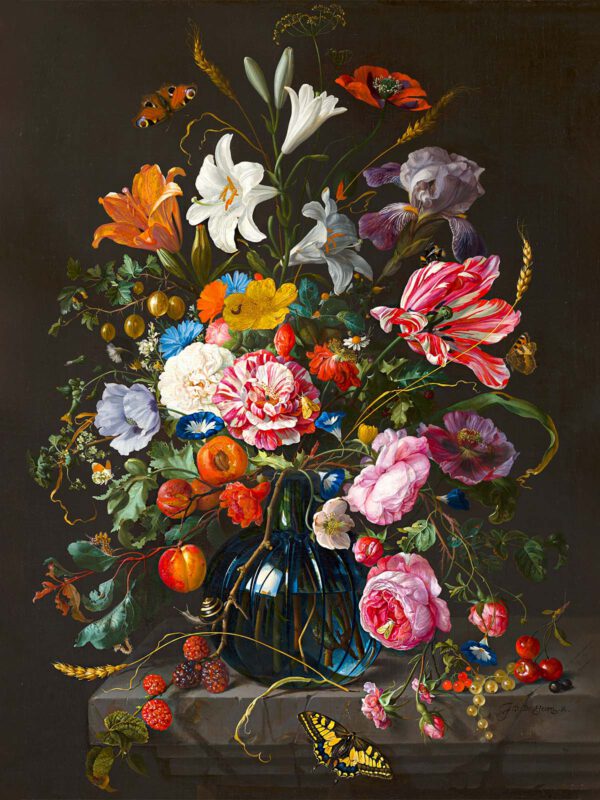
"The same cannot be said of the works of Abraham Mignon. Around 1700, the fireworks in the vases decreased slightly and the painters returned to a somewhat calmer flower image. A sign of the times at the end of the 17th century is that sometimes a brown leaf can also be seen, as an indication of withering, decay. In Rachel Ruysch, one of the successful female painters in this genre, we find a more modest bouquet in 1700, which shows this withering. Ruysch has even cut off one flower in the painting. Flowers, and their short lifespan, could represent the transience of life itself. It gradually became clear that the genre was on the decline, just like the Golden Age of welfare was over for the Netherlands. Fortunately, with 'In Full Bloom' we are able to show a great overview of this beautiful era, the legacy of the Golden Age of Floral Art."
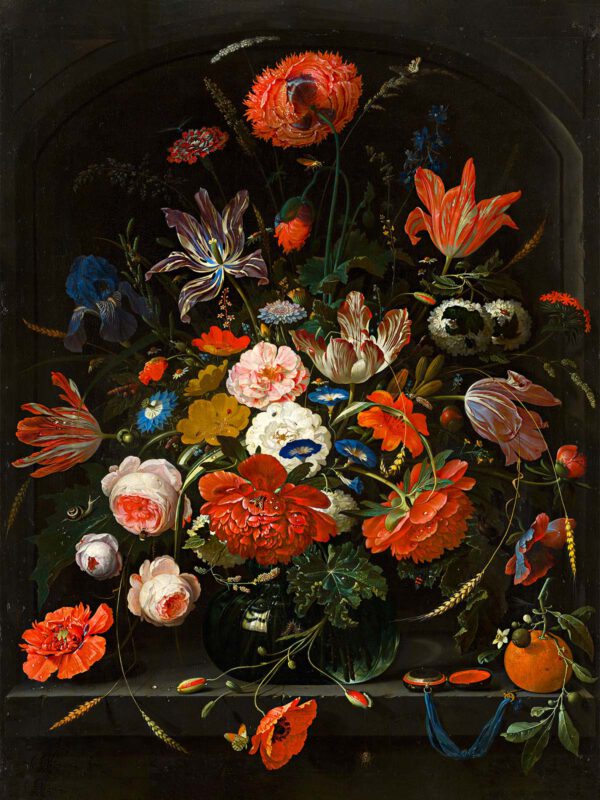
Visit 'In Full Bloom'
Go see this colorful exhibition in 2022! 'In Full Bloom' (Dutch: 'In Volle Bloei') can be visited from 10 February until 6 June 2022 in the Mauritshuis, The Hague, Netherlands. Click this link to plan your visit.

